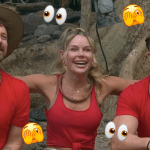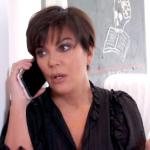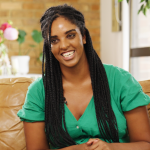
BREASTS.

They’re fantastic. We all know this.
For today, though, we’re here to talk about the fact that ONE in EIGHT Australian women are diagnosed with breast cancer.
Last night the McGrath Foundation lit up the sails of the Sydney Opera House with pink, to both gently remind us of this figure and mark the eve of their 10th anniversary.

At just 31 years of age, Jane McGrath was diagnosed with breast cancer. She found the available information overwhelming and often irrelevant to a woman of her age. Furthermore, she realised that there are countless issues young women in particular have to take into account when experiencing breast cancer.
Jane passed away at age 42 but her legacy lives on through the McGrath Foundation’s breast awareness initiative ‘Curve Lurve’.
The Curve Lurve initiative was designed to encourage Australian women to get to know their bodies. 70% of young Australian women believe they’re ‘breast aware,’ but only half that figure are checking their breasts on a monthly basis.
To help remedy this, and to make the exercise a breeze, the McGrath Foundation have developed a three step process for monthly breast checks called ‘Look, Lurve, Learn’:
LOOK

‘Ave a good ol’ look, ladies. Assess the shape and appearance of both your breasts and nipples in the mirror. Do so with your hands by your side so you ain’t distracted. Once you’ve done that, raise your hands in the air (~like you just don’t care~) and have another gander.
LURVE

Lurveeeeeeeeeee your pair, baby. Feel every inch of your breasts and nipples – taking special care to note any oddities. Continue giving yourself a lovely rub-down and check out the area from your collarbone to below the bra line; then get all up in your pits.
LEARN

Learn your normal. No one knows your pair better than you, so take the time to catch up with the gals. If there’s any changes, even tiny ones, don’t write it off as nothing. Go see your doctor ASAP.
If you’re thinking to yourself ‘oh, what a fantastic idea – if only there was some sort of way to be automatically reminded to conduct this simple and fast breast check once a month,’ then we’ve got just the thing for you.
The McGrath Foundation have developed the Curve Lurve Breast Awareness App, which will prompt you to conduct a breast check once a month. It’s also a fab source of condensed, relevant information about breast cancer for young women.

We strongly encourage you to download it from here.

Think you’re too young to develop breast cancer?
Meet Belle Weckert. Belle was only 29 when she was diagnosed with breast cancer. TWENTY NINE.
When breast cancer is found in someone that young, odds are it’s extremely aggressive. Chances of surviving are slimmer in these instances.
Belle normally uses a loofa in the shower but one day she happened to use her hands. Whilst washing, she felt a long, oval-shaped lump near her ribs that felt like a grain of rice. Panic quickly set in and she arranged to see her GP.
By the time of her appointment, Belle was embarrassed to bring up the lump with her doctor – she’d settled down and thought she was overreacting. “I’m more than happy for you to laugh in my face and tell me I’m an idiot but this is what I found, can you have a look and tell me what you think,” she said to her doctor.
Belle was reassured that she’d done the sensible thing (NEVER THINK YOU’RE BEING A HYPOCHONDRIAC) especially considering the doctor wasn’t sure what the lump was. Belle was diagnosed with breast cancer the following Monday: “From that point – you basically go into a fog. It just consumes you, it’s all you can think about.”
However, she pushed past the fear and pulled herself together.
“I’m either going to fight this and live, or give up and die. I’m not a quitter so there’s only one option – I’m going to fight it.”
Belle was given two options. She could either undergo a lumpectomy (the removal of the tumour and surrounding tissue) with a course of radio therapy, or undergo a mastectomy (the complete removal of one or both breasts).
Here’s the thing about breast cancer in young women: treatments such as a mastectomy will remove the ability to breastfeed. That’s not usually a problem or concern for a woman in her fifties – but for a woman in her thirties, it most certainly is. Also, a thirty year old is statistically more likely to be single than a someone in their fifties. Young women (a) think a potential partner will be put-off by a post-mastectomy body and (b) will take a huge hit to their own self-confidence.
“I saw my breasts as a symbol of my femininity,” said Belle. “If I chop my breasts off… how will I feel about myself? Is that being too shallow? Isn’t it better to be alive and be misconfigured? Isn’t that better than being dead but looking good?”
Belle decided to go with a lumpectomy, as a mastectomy only narrowly improved her odds of overall survival. By the time the tumour was removed it was two and a half times larger and surgeons had to operate twice to make sure all of it had been removed.
Before starting her six week course of daily radio therapy, she was asked to consult a fertility specialist. The type of medication Belle now needs to take for the next five years – as a part of her remission treatment – can potentially cause breast defects and future tumours if she falls pregnant. She was presented with the option of freezing her eggs which she says, “wasn’t something I thought I would be doing at 30.”
Women past the age of 50 are encouraged to have an annual mammogram but Belle, as an ambassador for the McGrath Foundation, thinks all women – young and old – should be conducting breast checks and receiving annual mammograms.
“Well, I’m 30. I wasn’t having mammograms because I was too young, and I wasn’t checking my breasts.”
Belle has now been cancer free for two years. YOU GO, GIRLFRIEND.
Her story demonstrates the need for ALL women to conduct monthly breast checks and be breast aware.
So, we’d like to reiterate:

Lead image via Getty.
All images via McGrath Foundation.



